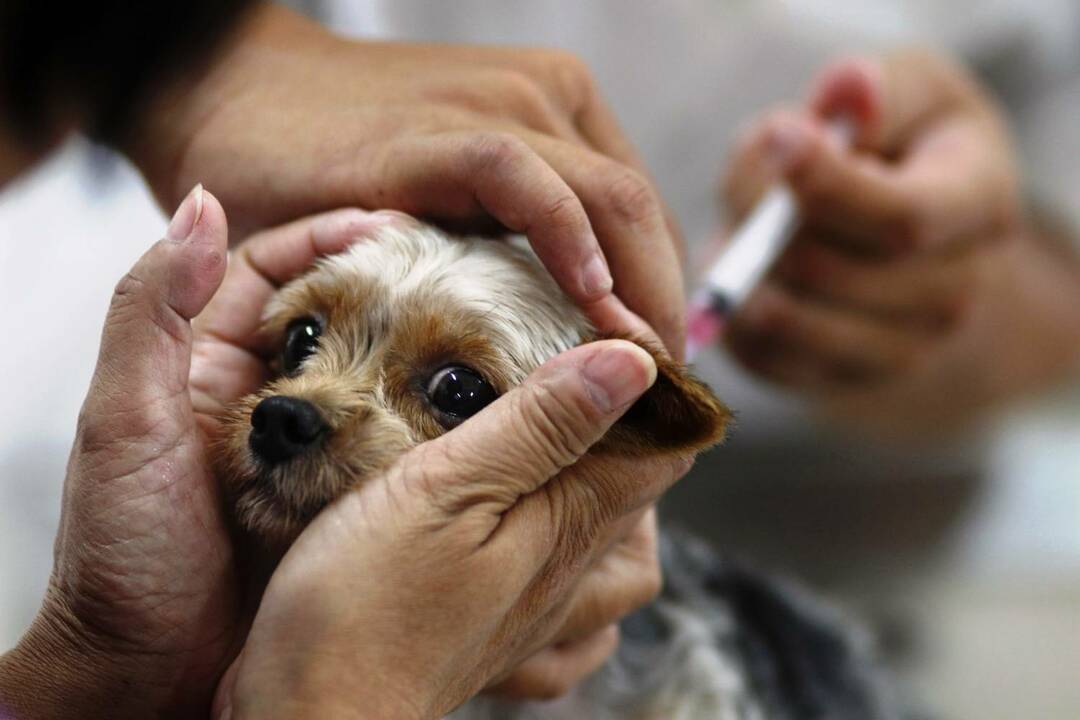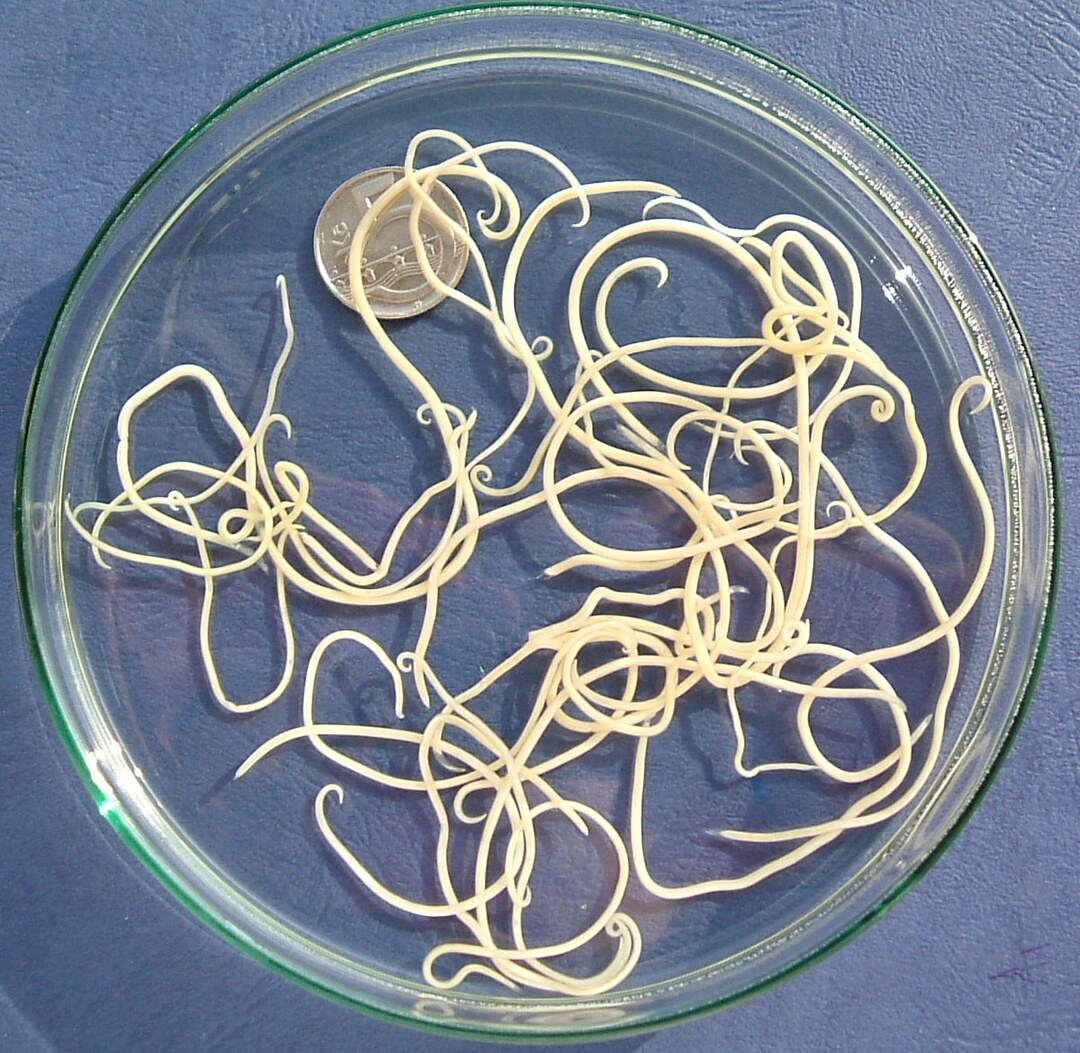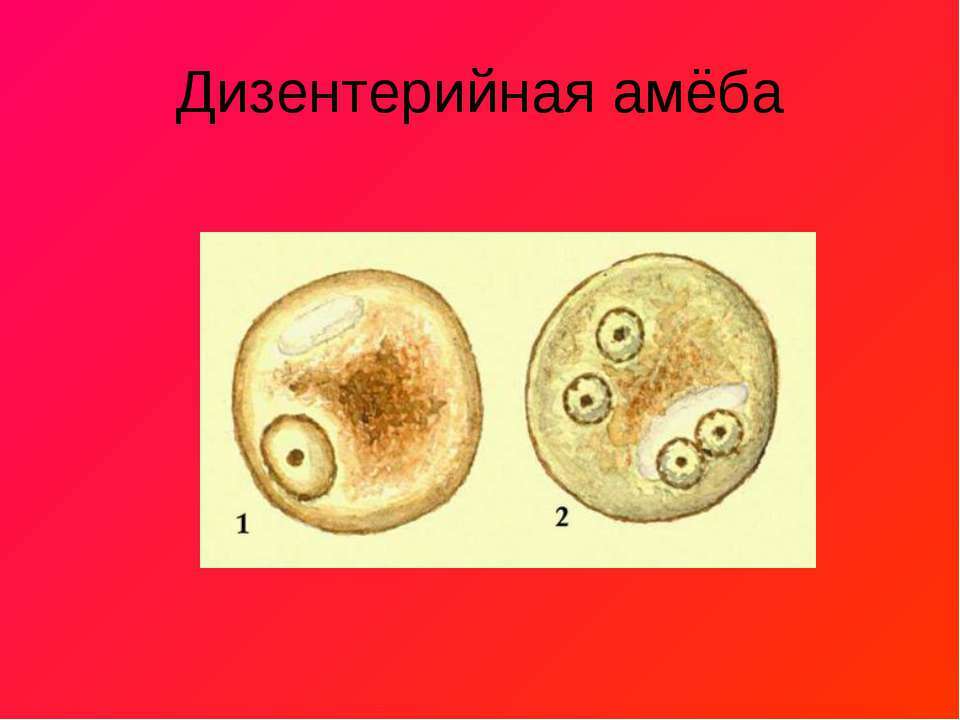Trichinosis symptoms in humans and treatment of a photo with a description
Trichinosis is acute parasitic disease (helminthiasis), which affects not only humans, but also other mammals. The clinical manifestations of the disease are severe, complete loss of work activity and death are possible.
When infected with trichinosis, severe fever, pain and aches in the muscles, swelling of the face, and rashes appear. In case of complications, the respiratory and central nervous systems are damaged.
Infection occurs due to invasion, that is, the ingress of a parasite (helminth) into the body. The helminth in the muscular system lays the larvae.
The incubation period is about four weeks, after which the larvae develop actively and they are covered with a capsule. The main causative agent of trichinosis is helminth, which reaches up to 3 mm and has the appearance of a spiral.
Content
- Causes of Trichinosis
- Provoking factors for the development of the disease
- Trichinosis symptoms
- Trichinosis stages
- Diagnosis of trichinosis
- Trichinosis treatment
- Medication for trichinosis (drugs)
- Trichinosis surgery
- Complementary and alternative home treatments for trichinosis
- Food
- Folk remedies
- Exercises
- Prevention of trichinosis
- Trichinosis prognosis
- Related Videos
Causes of Trichinosis
The source of infection for humans is different types of adult animals infected with Trichinella - wild animals: bears, foxes, nutria, wolves, wild boars.
Infected marine species include: seals, sea lions, beluga whales, walruses, and whales. Livestock, pets and rodents are no exception: dogs, pigs, cows, goats, mice, rats, cats. Trichinosis is not spread from person to person.
The most common causes of trichinosis are:
- good adaptation of the causative agent to temperatures;
- the human body is extremely sensitive to trichinosis;
- collective outbreaks of the disease. This often happens in groups of people, families who ate meat with helminths;
- relapses of trichinosis occur due to the instability of immunity that arose after the first invasion.
Provoking factors for the development of the disease


A person becomes infected by eating food, that is, orally. The larvae of helminths enter the human body and begin active development. The most dangerous type of meat is considered to be jerky, raw, improperly cooked (boiled or fried) and smoked bacon with veins.
Trichinosis symptoms



Initially, trichinosis in humans does not have any specific symptoms. There are no visible changes in the muscular system.
Proteins, which are the main constituent of the helminth's body, harm a person. Proteins are very strong allergy pathogens and foreign elements for the human body. When infected, a severe allergic reaction occurs.
The latency period lasts from 1 week to 1 month. With trichinosis, the symptoms are not pronounced. Long-term development of symptoms indicates that the disease is becoming severe.
Symptoms of mild and moderate forms of trichinosis are as follows:
- hyperthermia. Body temperature is relatively low (37.5 C), daily deviation is 1C;
- swelling of the legs, hands or the whole body (see. photo above). This is due to the body's sharp reflex to the ingress of foreign protein;
- muscle pain. This symptom is one of the signs of a severe form. Acute pain manifests itself in the muscles of the calves, which affect the entire muscular system. when moving and touching, the pain is aggravated. Symptoms and signs begin to bother a person from 4 days after the invasion;
The following symptoms are skin rashes, which take the following forms:
- hives - bubbles of pinkish color of different sizes;
- Utricar rash - severely itchy and slightly raised blisters above the skin;
- papular rash - multiple plaques that join together.
The severe form of trichinosis has its own complications:
- meningoencephalitis - pathological processes in the membranes of the brain;
- eosinophilic pneumonia. The onset of the disease provokes a high content of eosinophils (foods that cause allergies) in the lungs. On the background pneumonia pleurisy and symptoms may develop bronchial asthma;
- myocarditis – inflammation of the heart muscle (myocardium), due to allergies and a sharp immune response. The complication can lead to the death of the patient;
- nephritis - pathology of kidney tissue;
- hepatitis is an inflammatory disease of the liver.
Read also:Analysis of feces for eggs of worms (helminth eggs)
Mortality is around 30% in severe form. Death occurs at 8 weeks from the beginning of the invasion. With a mild form, the prognosis is favorable and after 6 weeks a complete recovery occurs.
Trichinosis affects not only adults, but also children. Trichinosis in children can occur when eating meat contaminated with Trichinella. For a child, 15 grams of the product is enough for infection.
The period from the beginning of infection is from one week up to 1 month. With little or no treatment, a severe form of the disease can develop.
The period of the mild stage of the disease is about 15 days, but after recovery, minor symptoms may remain for a week.
The symptomatology of the mild stage looks like this:
- hyperthermia. The temperature reaches 39 C;
- slight swelling of the face;
- mild muscle pain;
- high content of eosinophils (13%).
Symptoms at the moderate stage. The duration of the illness lasts more than three weeks, rehabilitation takes place within two weeks after recovery. The symptoms are as follows:
- hyperthermia reaches 40 C. Reception antipyretic drugs the temperature is reduced by only 1 C and for a short time;
- the child's muscles and stomach begin to ache;
- rashes;
- swelling of the face;
- the content of eosinophils reaches 40%.
Therapy of the disease at a severe stage is carried out in the stationary conditions of the infectious diseases department. The child may die due to lack of treatment. Symptoms of the severe stage:
- temperature is more than 40 C;
- there is an increase liver;
- the central nervous system is disturbed - hyperactivity, convulsions, seizures, convulsions;
- cramps in the abdomen;
- diarrhea, vomiting;
- muscle pain accompanied by convulsions;
- subcutaneous hemarthrosis;
- the content of eosinophils is up to 90%.
Therapeutic exercises, massages, baths with various medicinal substances are used as rehabilitation.
Trichinosis stages

At the onset of the disease, symptoms are dependent on the number of larvae. Further progression depends on the multiplication of parasites and the general state of the patient's immunity.
Severe complications of the disease are caused not by the vital activity of helminths, but by the non-standard reaction of the body to the ingress of foreign protein.
The stages of trichinosis are:
- Trichinosis invasion (ingress of parasites). Trichinella penetrate the human body and are located in the small intestine. Fixation occurs on the membrane, causing severe inflammation. For several months in the intestines, helminths develop into adults, fertilization and further spread of more parasites occurs. One Trichinella can produce more than 1,500 new individuals.
- Dissemination (reproduction parasites throughout the body). Helminths begin to migrate into the tissues of the whole organism, getting into the muscles. The larvae spread with the help of blood through the vessels. After entering the blood, helminths are attached to the muscle fibers. The development and growth of Trichinella begins, with the release of allergens. The intoxication process and allergies are progressing in the body.
- Encapsulation stage. During this time, the tissues are regenerated. Trichinella reaches 0.5 mm in size and takes the shape of a spiral. The larva is enveloped in a capsule and temporarily stops development. Symptoms and discomfort stop being pronounced and practically disappear. After a certain time, the capsule with the larva calcifies and the secreted salts can kill the helminth. Trichinella spp. Can maintain their vital activity for many years.
Trichinosis in children is divided into three stages - early, moderate and severe.
Read also:Enterobiasis: causes, symptoms and treatment in adults and children
Diagnosis of trichinosis
Symptoms similar to other muscle pathologies indicate that this makes it difficult for specialists to make a diagnosis.
Trichinosis is diagnosed using laboratory tests. A fecal analysis is taken from the patient in order to identify the presence of the main pathogen - Trichinella. In addition, the following diagnostic measures are carried out:
- General blood analysis. Trichinosis provokes in a person the appearance of too high levels of eosinophils in the blood. The content is 80% of the total number of leukocytes;
- Serological diagnostics. Investigation of the reaction of erythrocytes to the addition of antigens taken from parasites. This diagnostic method is divided into five types:
- 1. Complement fixation reaction (CBC). When antibodies are found in the patient's blood, they are grouped with the antigen and bind to the complement (an element involved in immune reflexes);
- 2. Indirect hemagglutination reaction (RNGA). This type of diagnosis is based on the ability of blood cells to connect when antigens and antibodies are located on the surface of erythrocytes;
- 3. Enzyme-linked immunosorbent assay (ELISA). The interaction of the antigen with the antibody is established. For a label that allows you to see the result, special enzymes are used;
- 4. Immunofluorescence reaction (RIF). In the material used, there is a special label that leads to luminescence if the antibody reacts to the antigen;
- 5. The reaction of enzyme-labeled antibodies (REMA). The result is assessed by a label that acts as a special enzyme;
- Intravenous allergen test. There is a provocation of a reaction to the introduction of the helminth antigen. A little antigenic solution is injected subcutaneously. The diagnosis is made after the manifestation of hyperemia and redness at the site of antigen injection;
- Muscle biopsy. It is carried out only after the results of other examinations, there should be no positive result. With the help of microscopic analysis, biological material obtained from the area of infection is studied;
- Analysis of the meat product of infected animals. Fragments of meat are examined under a microscope. If the product is contaminated, the results show helminth capsules.
Trichinosis treatment
Since the symptoms and course of trichinosis are severe, treatment should be stopped as soon as possible. Treatment takes place in a stationary environment under the supervision of doctors.
During the period of illness, bed rest is recommended. One of the methods of stopping the disease is etiotropic therapy, that is, taking various drugs.
Medication for trichinosis (drugs)

The relief and treatment of trichinosis involves taking anthelmintic drugsthat fight the main causative agent of the disease.
These tools include:
- Mebendazole. The drug disrupts the metabolism of helminths and the absorption of glucose by them. Due to violations of synthesis, parasites die. The drug is contraindicated for pregnant and breastfeeding women;
- Albendazole. The effect of the drug is almost the same as that of Mebendazole. It is known to be effective against larvae. Has the form of tablets of 0.2 grams. Pregnant women and people with diseases of the retina are contraindicated;
- Vermox. The drug is 90% effective. The active ingredient in the composition is mebendazole;
- Thiabendazole. Effective by 90%.
To eliminate the symptoms of trichinosis, the following drugs are prescribed:
- anti-inflammatory medicines - Diclofenac, Ortofen, Voltaren, Diclogen. The drugs neutralize inflammation caused by allergic reactions;
- antipyretic drugs - Paracetamol, Aspirin, Nurofen, Ibuprofen. Reception is required at temperatures above 38 C;
- glucocorticoids (hormonal drugs that suppress immunity and reactions to allergens).
Trichinosis surgery
Operations are not performed in case of a disease, it has been established that this is impossible. Trichinosis is treated with medication.
Complementary and alternative home treatments for trichinosis
Self-medication at home is ineffective compared to medical methods that are carried out in a stationary environment.
Read also:Anthelmintic drugs for humans with a wide spectrum of action
The patient must be under the supervision of specialists, observe bed rest and take medication. As your recovery progresses, doctors may review your medical strategy and discharge.
At home, the patient must carefully follow the doctor's prescription and monitor the dosage of the drugs taken.
Read also: Garlic against parasites in the human body, recipes
Food
With trichinosis, an antiparasitic diet is mandatory. The recommendations are as follows:
- Any meat must be properly heat treated. Meat must be boiled well or stewed at high temperatures. For example, at 80 degrees, Trichinella die. If the meat is cooked over a fire, then it must be cut so that each piece is properly fried;
- It is forbidden to dry or salt the meat. With such treatments, Trichinella does not die. Parasites are resistant to cold temperatures, they die only at -50 degrees. In this case, the meat can be frozen for three days at -20 degrees;
- Before use meat of wild animals, you need to make sure that the food is ready. Before cooking, you need to make several cuts in the meat along the grain - this will help to identify if there are parasites.
Folk remedies

In the treatment of trichinosis, traditional medicine is used with the use of various medicinal herbs.
Decoctions of thyme, thyme, wormwood, dandelion and cloves will help in the treatment of the disease. You can drink alcoholic tinctures from onion and garlic juice.
Trichinosis disrupts liver function, in this case oil will help milk thistle, accept 1 month needed.
The dosage of the oil is one teaspoon three times daily on an empty stomach. Preparation of milk thistle oil is prepared as follows:
- Take milk thistle seeds and a liter of olive oil;
- Stir and cook in a water bath for 20 minutes;
- Filter so that there are no residues of seeds in the oil;
- The oil can be consumed.
Exercises
After recovery, the patient is recommended light physical exercises, massages and therapeutic exercises.
Prevention of trichinosis
For prevention, doctors strongly recommend:
- Do not take meat in spontaneous markets. This is a place where the meat is not covered or properly processed;
- Do not eat raw, jerky or not completely cooked meat;
- Do not eat sweets and foods to which you are allergic. High sugar levels develop a favorable environment for Trichinella, and allergens can intensify an already powerful allergic reaction to helminth protein;
- Do not abuse salt and salty foods (pickles). The daily salt intake should be no more than five grams;
- If you have severe swelling, do not drink a lot of fluids. Because of this, there is a strong load on the kidneys and the swelling will increase.
In addition, it is necessary to consult with specialists, both with the initial manifestations of the disease, and with relapses. The description and treatment of trichinosis should be dealt with by infectious disease specialists, parasitologists and family doctors.
Trichinosis prognosis
The prognosis of the disease is favorable, but only for mild and moderate forms. Short-term renewal of clinical manifestations is not excluded:
- myalgia;
- moderate swelling;
- the presence of eosinophils in the blood.
In the case of a severe form with complications already present, the prognosis becomes more complicated. With a lack or absence of diagnosis and treatment of trichinosis, death may occur.
If the course of the disease is rapidly deteriorating, then death occurs in the first days after the invasion. After recovery from trichinosis, full recovery of working capacity will last 6 months, in severe form - a year.



